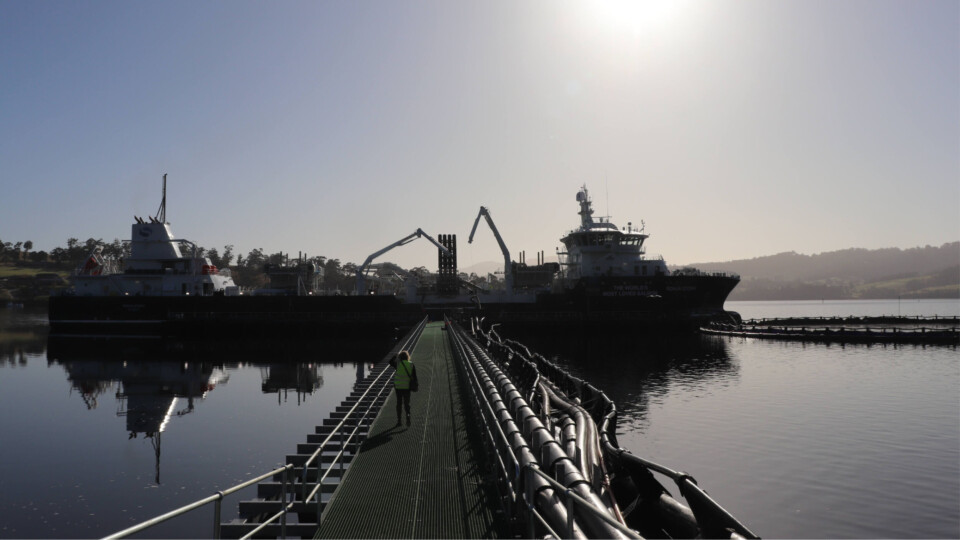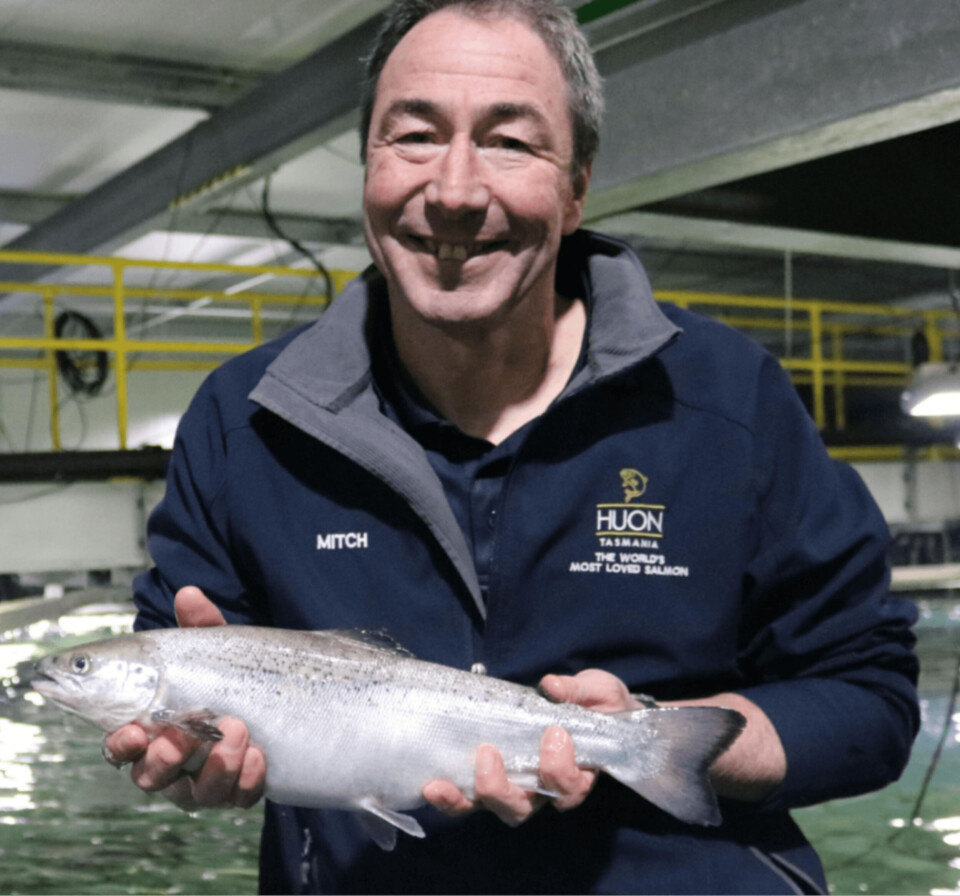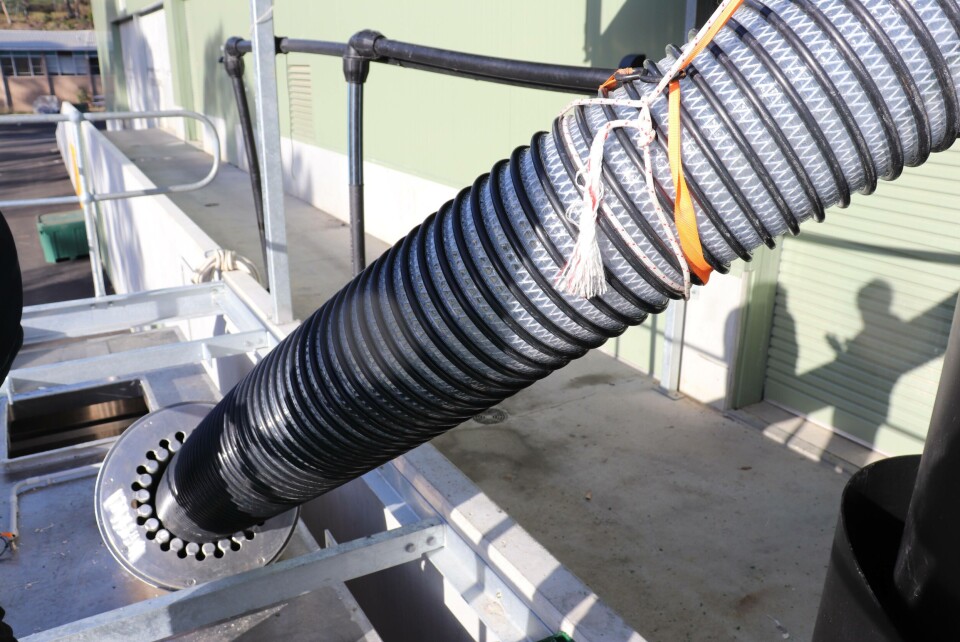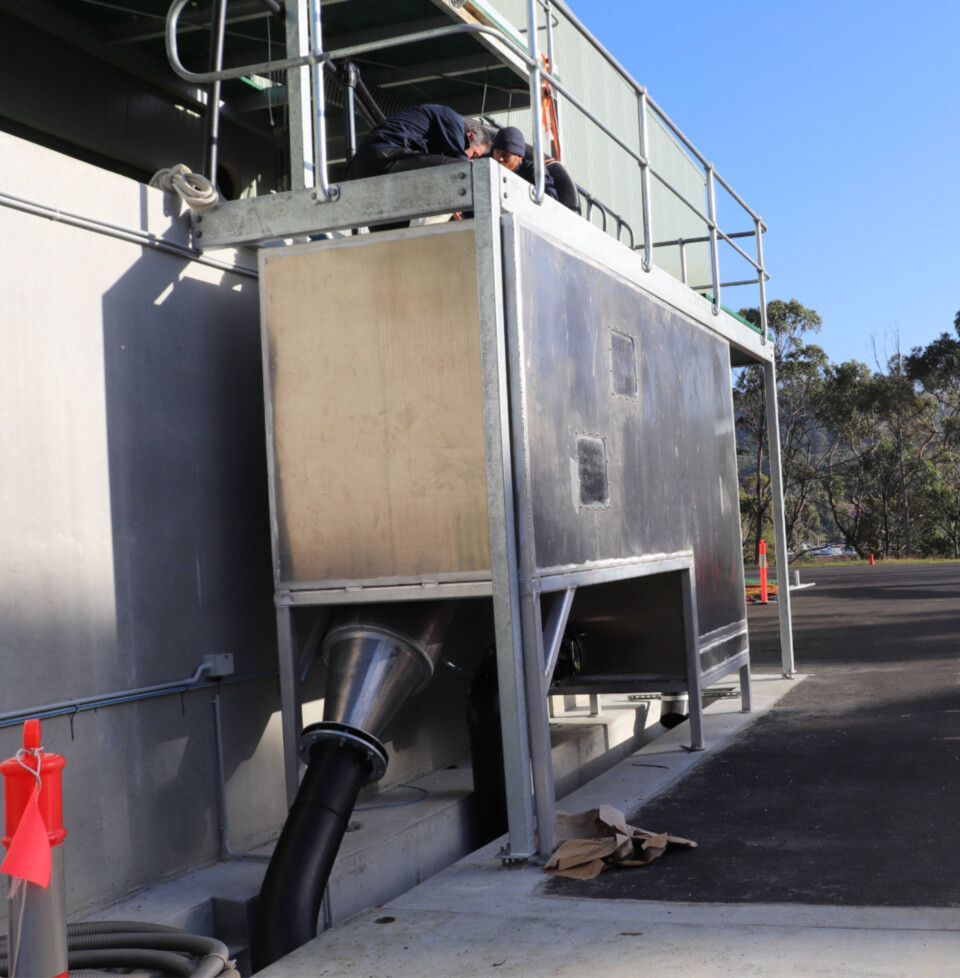
Going the distance: smolts successfully transferred to boat through 1km pipe
Transferring fish by pipe is not unusual in salmon farming – unless that pipe runs for nearly a kilometre!
That’s the distance smolts grown by Tasmanian salmon farmer Huon Aquaculture are travelling in a near eight-minute journey through an underground pipe from the company’s Whale Point nursery to the world’s biggest wellboat, the Ronja Storm.
More than 160,000 salmon with an average weight of 400 grams were successfully moved to the boat last week in an operation that took around seven hours.

A better way
David Mitchell, Huon Aquaculture’s general manager of freshwater operations, said the success of the inaugural transfer signals a new and better way of moving salmon from the nursery.
“We are very pleased that the transfer pipe worked the way that we hoped it would. Moving our fish this way means less handling which we believe will result in better fish health and performance following the transition from freshwater to saltwater,” he said.
“Importantly, this transfer system is quiet and unobtrusive to our neighbours which can only be a good thing.”
All future transfers to the wellboat will be carried out via this new system. Salmon were previously pumped on to tankers and driven the short distance to the Port Huon Wharf for loading on the wellboat.

Oxygen injection
“By controlling the water flow in the pipe, pump speed and crowding of the fish, we are able to move them steadily in water all the way to the wellboat,” said Mitchell.
The pipe has oxygen injection manifolds visible from above ground and continues out along the wharf to the wellboat. The pipe joins are fusion welded to ensure they are smooth.
“The Ronja Storm pumps temperature-controlled brackish water with a salinity of 10-15 parts per thousand into a supply pipe on the wharf,” explained Mitchell. “A 45-kilowatt pump on the wharf then picks this up and pumps it up the hill to the nursery. Pump speeds between the two pumps are carefully matched.
“The smolt are dewatered in the nursery, with the nursery retaining its water, and the fish are delivered into an external sealed re-waterer containing the pumped wellboat water that then takes them down the hill to the boat. Both pumped fish loops are separate, ensuring wellboat water never enters the nursery for biosecurity reasons.”

Two metres per second
It currently takes Huon six to seven hours to move one tank of fish of 50-60 tonnes at a steady speed. The pipe is 950 metres long with a head of 14 metres and fish travel down it by gravity.
“At this distance, and this head, with friction loss in the pipe the fish speed is approximately around 2m/second and that gives them a travel time in the pipe of around 7 minutes 50 seconds,” said Mitchell.
“When the last fish have been loaded, we send a foam ball down the pipe to make sure there are no fish left in the pipe.
“Once in the wellboat, the salinity is brought up slowly over a six-hour period to help the fish acclimate gradually to salt water.”
Great work from contractors
Mitchell said Huon had consistently seen great work from local contractors at Whale Point and the new transfer system was no exception.
“Thank you to Gandy & Roberts, BC Electrical, Cromarty, Billund, Mitchell’s Plastic Welding, Haugland and of course our own freshwater and marine operations teams for their work on this project,” he concluded.
The Whale Point nursery, which is built on the site of a former pulp mill, houses 12 circular 16-metre diameter, 4m deep, 800m³ grow-out tanks, four smaller grading tanks at 220m³, water treatment facilities and a staff office.






















































